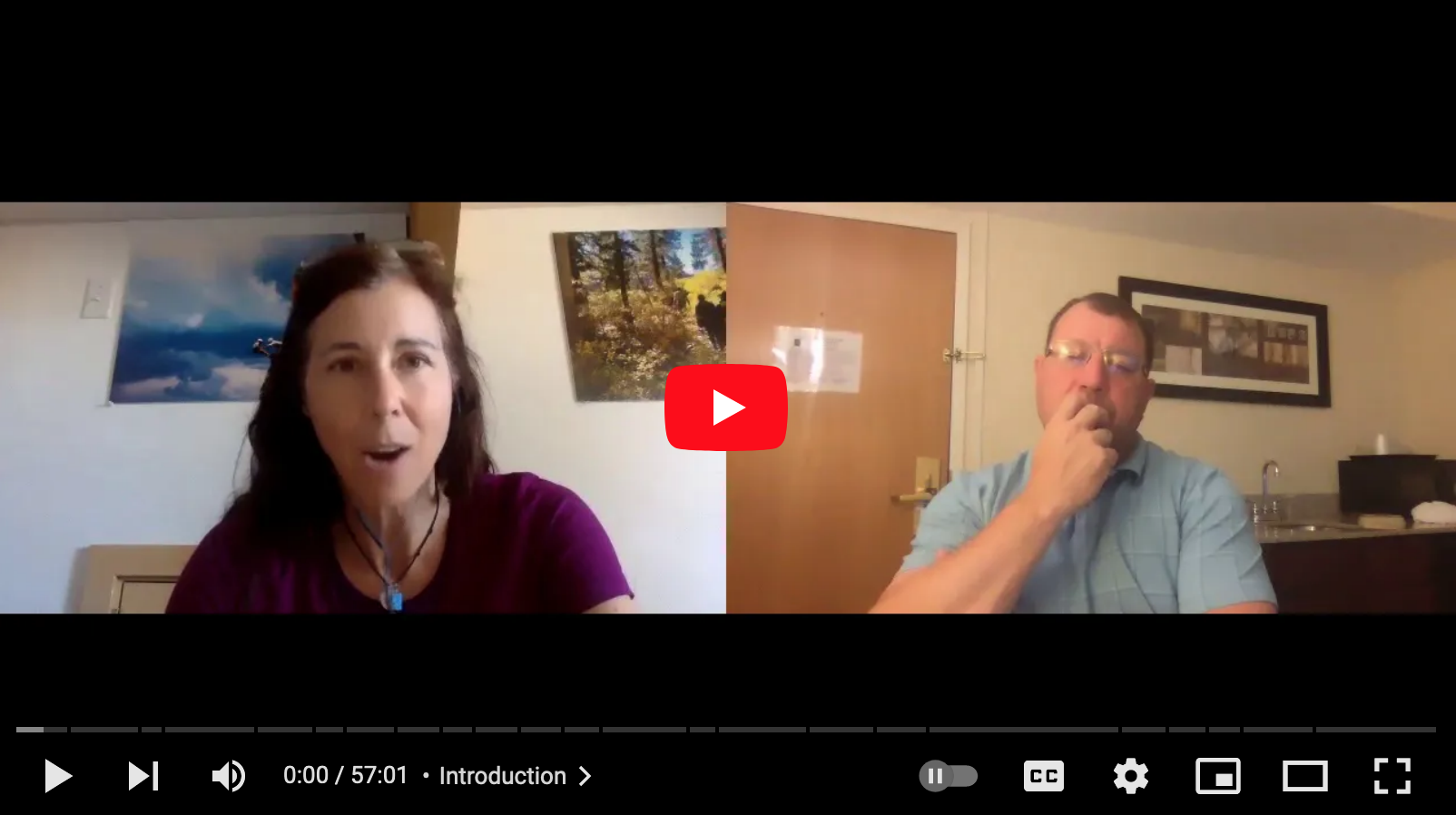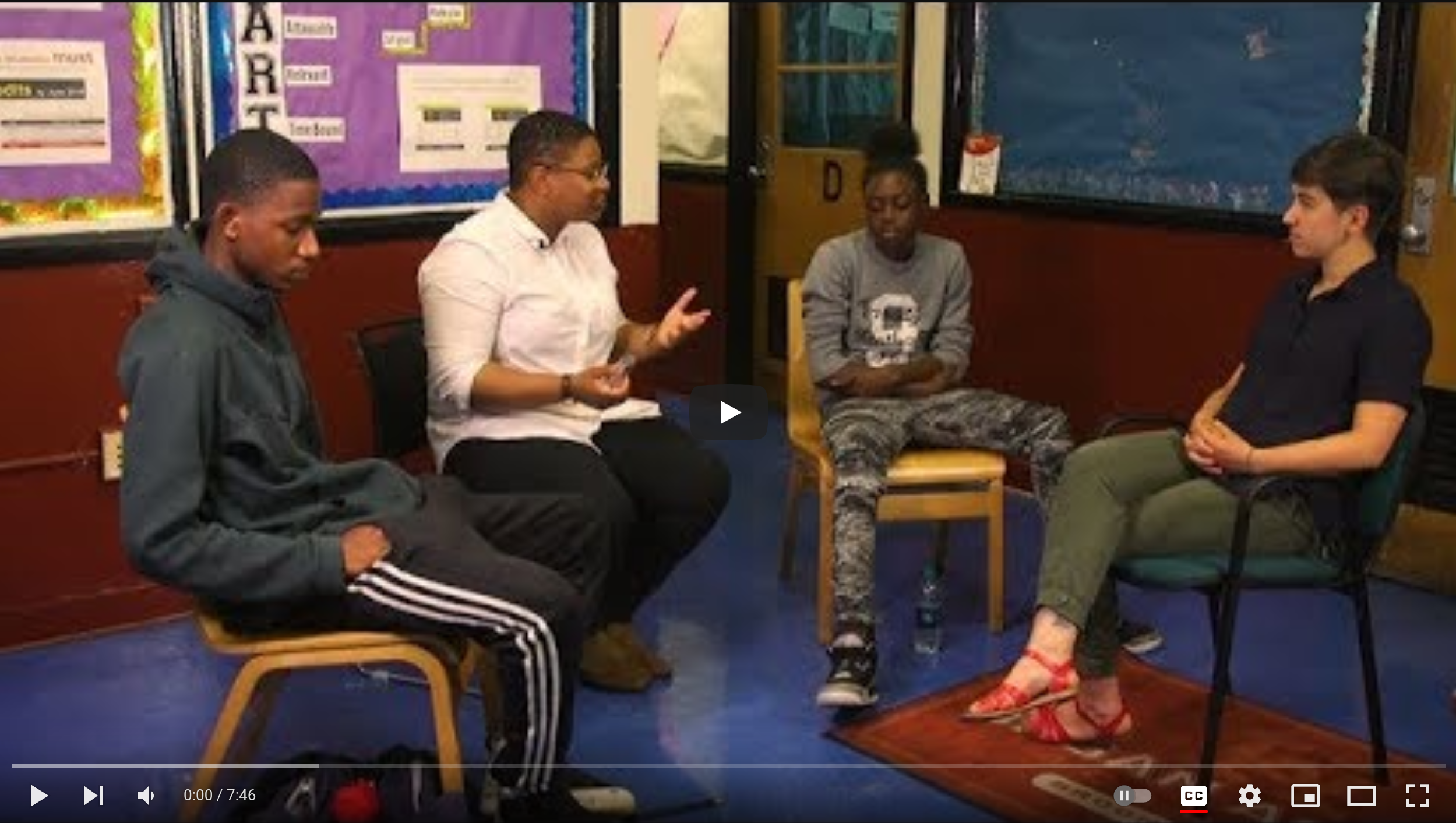News & Announcements
- Details
- Written by Laura Mirsky
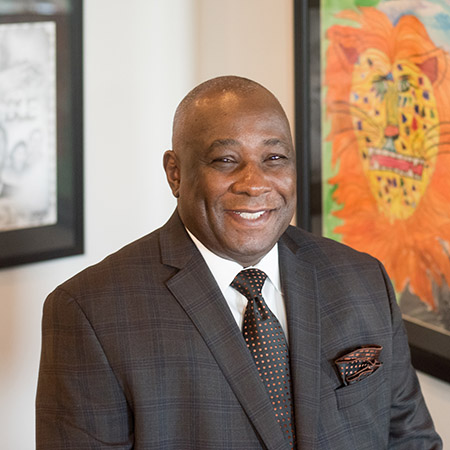 "The conference is an opportunity to bump shoulders with the restorative elite, who live and practice restorative practices on a day-to-day basis." - Robert Thornton, Senior Program Officer, Skillman FoundationThis is last in a series of interviews of sponsors of Strengthening the Spirit of Community, the IIRP World Conference in Detroit, MI, October 24-26, 2018. Sponsors are providing scholarships for Detroit community members, bringing a new level of connection and engagement to the conference. Robert Thornton, Senior Program Officer of the Skillman Foundation, explains why Skillman is a Supporter. He speaks about Skillman's work and why you should join them at the conference!
"The conference is an opportunity to bump shoulders with the restorative elite, who live and practice restorative practices on a day-to-day basis." - Robert Thornton, Senior Program Officer, Skillman FoundationThis is last in a series of interviews of sponsors of Strengthening the Spirit of Community, the IIRP World Conference in Detroit, MI, October 24-26, 2018. Sponsors are providing scholarships for Detroit community members, bringing a new level of connection and engagement to the conference. Robert Thornton, Senior Program Officer of the Skillman Foundation, explains why Skillman is a Supporter. He speaks about Skillman's work and why you should join them at the conference!
What prompted you to sponsor community scholarships to the IIRP World Conference in Detroit?
The Skillman Foundation has been supporting the restorative framework in Detroit for several years. I believe in its transformative powers. I have seen what can happen when people commit to building restorative communities with fidelity. So it makes sense to expose as many residents as possible to restorative practices.
Why should people come to this conference?
1. We're going to have a gathering of some of the best minds in the world who’ve been working in this platform for a very long time, all in one place. 2. You're going to come to a city that is in the midst of a renaissance as a major place in this world. And most important, it's an opportunity to bump shoulders with the restorative elite, who live and practice restorative practices on a day-to-day basis.
- Details
- Written by Laura Mirsky
This article is second in a series featuring sponsors of Strengthening the Spirit of Community, the IIRP World Conference in Detroit, MI, October 24-26, 2018. University of Michigan-Dearborn is a Champion Sponsor, providing scholarships for Detroit community members and bringing a new level of connection and engagement to the conference.
In this interview, Tracy S. Hall, Ph.D., Executive Director of the Office of Metropolitan Impact, and Amy Finley, Ph.D., Dean of Students, explain the importance of restorative practices to their campus and why they would like you to join them at the conference in Detroit!
 "We are deeply committed to being a restorative campus." - Tracy Hall, Ph.D.
"We are deeply committed to being a restorative campus." - Tracy Hall, Ph.D.
Tracy S. Hall, Ph.D.
What prompted you to sponsor community scholarships to the IIRP World Conference in Detroit?
Restorative practices is crucial to global and community healing. U-M Dearborn is an anchor to our community. We want to support our community doing this important work, so they can do it better. If the community can't get to the conference, how do they learn and buy in?
Why should people come to this conference?
To be inspired, to be informed and enriched, to find other people who see the world as a positive place to be. To strengthen their mental muscles in their practices, to be reinforced. To feel refreshed and refueled and renewed. It's easy to focus on the negative. Restorative practices provides a chance to see human frailties and see beauty come out of the cracked and broken.
- Details
- Written by Laura Mirsky
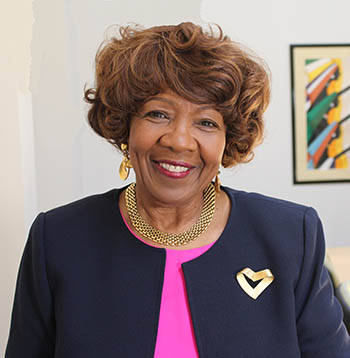 "Relationships and strengthening the fabric of communities have always been key to our work." - Alice G. Thompson, CEO Black Family Development, Inc. (BFDI)Detroit community groups are gearing up to share the extraordinary work they are doing to help make Detroit a restorative city at Strengthening the Spirit of Community, the IIRP World Conference in Detroit, MI, October 24-26, 2018. Sponsors are providing scholarships for Detroit community members, bringing a new level of connection and engagement to the conference.
"Relationships and strengthening the fabric of communities have always been key to our work." - Alice G. Thompson, CEO Black Family Development, Inc. (BFDI)Detroit community groups are gearing up to share the extraordinary work they are doing to help make Detroit a restorative city at Strengthening the Spirit of Community, the IIRP World Conference in Detroit, MI, October 24-26, 2018. Sponsors are providing scholarships for Detroit community members, bringing a new level of connection and engagement to the conference.
In this series of interviews, our sponsors tell about their work and why they think you should join them at the conference!
First, Alice G. Thompson, CEO of Black Family Development, Inc. (BFDI), explains why BFDI is a Champion Sponsor and is hosting the IIRP World Conference.
What prompted you to sponsor community scholarships to the IIRP World Conference in Detroit?
It's BFDI’s goal to establish in Detroit a restorative practices city, one community at a time. We believe in the spirit of community, and we want to work with communities to strengthen that spirit. That really is our heartbeat. Our neighborhood community circle keepers, our residents, our schools, our police, our organizations, are training in restorative practices. They are coming together to improve relationships, reduce tensions, repair harm and take control of their neighborhoods. We want to expose them to a broader vision of restorative practices, give them new ideas and spark innovations: things they can do in own neighborhood and their city.
Why should people come to Detroit?
To learn, share, pick up new ideas and receive innovations. Folks are doing unique things here that people can borrow. Our community-engagement circles are truly empowering residents. This work is really worth looking at. Our young people are leaders on how to use restorative processes to improve social connection and repair harm. I have not seen anyone as steeped in community-based work with restorative practices as we are here in Detroit.
- Details
- Written by John W. Bailie, Ph.D.
 Image by nathan-dumlao @ unsplashIt was 2008. The Great Recession was in full swing. An organization that was growing steadily until that point had nearly ground to a halt.
Image by nathan-dumlao @ unsplashIt was 2008. The Great Recession was in full swing. An organization that was growing steadily until that point had nearly ground to a halt.
It was very eerie in the office. The rush and crush of a once busy international professional development and coaching business was gone.
The phones were not ringing. The last of our multi-year contracts were coming to an end. Event registrations were low.
We had recently launched a new and innovative graduate program after investing nearly a decade of sweat equity and what little surplus we could pool from our consortium of organizations. After a promising initial growth period following program launch, new student inquiries were way down.
In another corner of our consortium, referrals were plummeting for the private schools and counseling programs we administer for at-risk youth. The rapid and unexpected loss of steady revenue from these programs was, in a word, crippling.
I was nearly ready to grab my sandwich board and become a street corner preacher. Repent! The end is near!
For the first time in our thirty-year history, we were headed toward layoffs. We held a meeting with several hundred staff to discuss the state of the organization and our plans to right the ship.
- Details
- Written by Miguel Tello, Director of the Strachan Foundation and IIRP Trustee, with Laura Mirsky
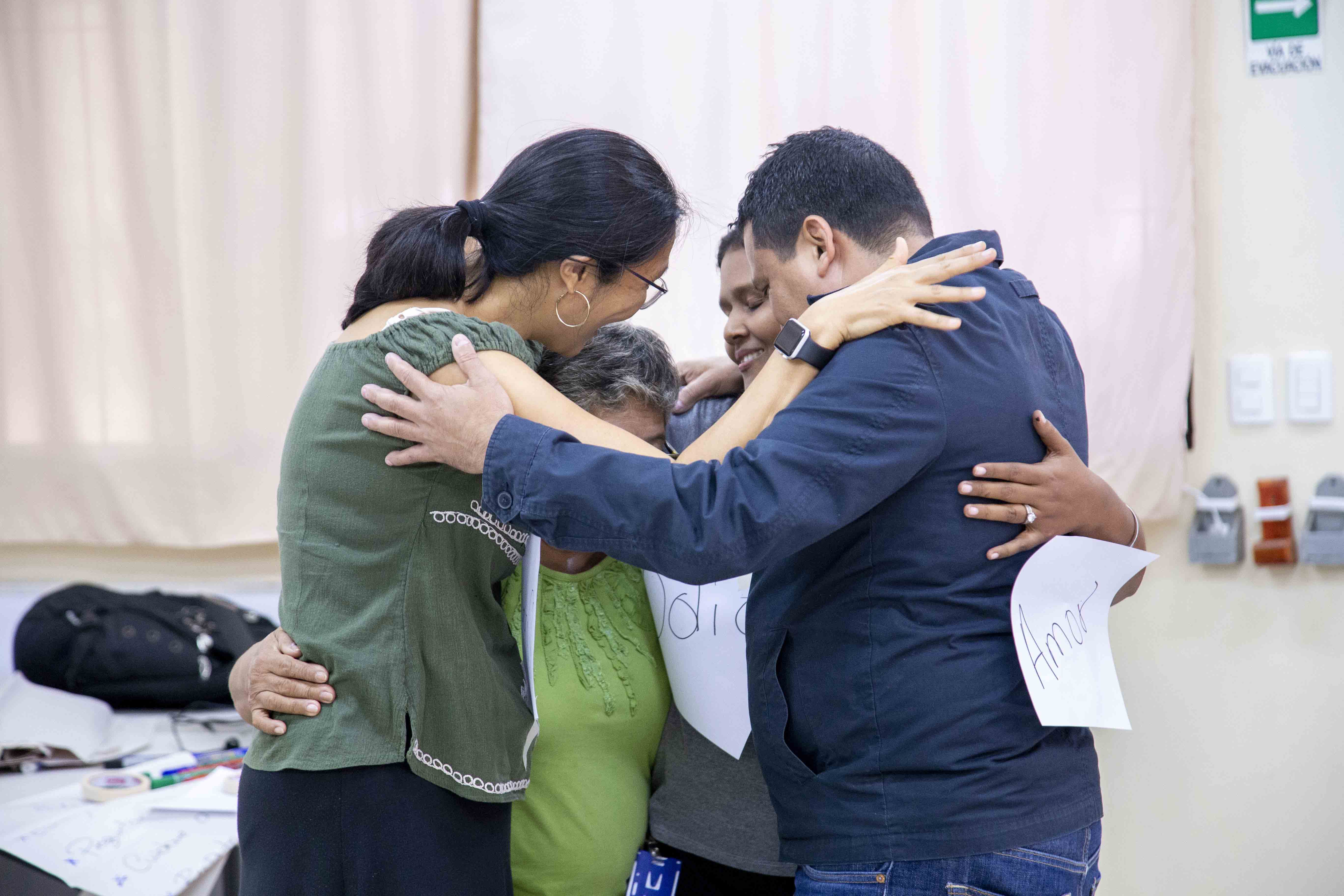
Violence boiled over in Nicaragua in April 2018. Citizens protested government social reforms and police responded with extreme brutality. The newspaper La Prensa reports 351 dead, 2,100 injured, 329 imprisoned and 68 tortured.
The country has since become polarized. There have been waves of anarchy: looting, arson and violent conflict, even among families.
AMOS, an NGO that delivers health interventions in Nicaragua (http://www.amoshealth.org), is helping its staff and clients deal with this nightmare.
IIRP Latin America first provided circles training for AMOS in 2009. They took to the process immediately, and it has become part of their organizational culture. They use circles to address conflict in the communities where they work, to make decisions and address staff tensions. During the current upheaval, circles have become a beacon of hope for AMOS's staff and the communities they serve.
- Details
- Written by Liz Horvath, IIRP Advancement & Relations Intern
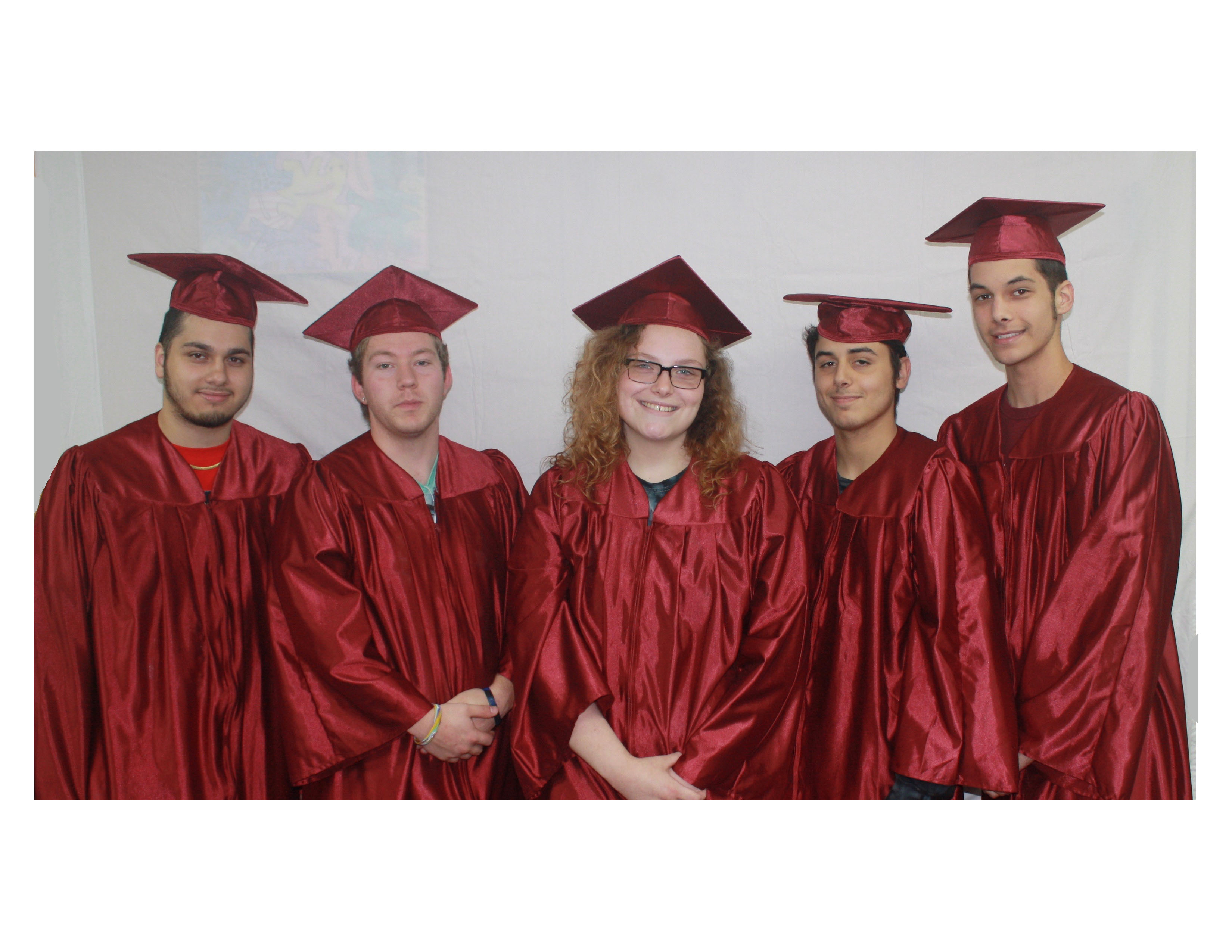 Buxmont Academy Pottstown graduates (left to right) Cesar Dominguez-Zavala from Shillington, Justice Lewis from Bally, Emily Overley from Exeter Township, Nathan Harris from Eagleville and Jordan Rubino from Schwenksville.
Buxmont Academy Pottstown graduates (left to right) Cesar Dominguez-Zavala from Shillington, Justice Lewis from Bally, Emily Overley from Exeter Township, Nathan Harris from Eagleville and Jordan Rubino from Schwenksville.
When I attended Buxmont Academy's graduation in June 2018, I didn’t know what to expect. I'd had no interactions with the students. All I knew was that this was a small group of 6th-12th graders who were using restorative practices to learn how to better understand their emotions while achieving academically.
When I arrived at the school, I could immediately tell that this was so much more than a graduation. My limited knowledge didn’t come close to describing what these students had achieved.
The ceremony began with the premiere of “CSF: The Shortical.” This video of a short musical about their school starred the students and featured original songs, dances and dialogue. The community they had created was obvious. They had come together from different places and life experiences and created something to celebrate that. Seeing their pride in this accomplishment was truly inspiring.
- Details
- Written by Kristin Oakley
In this webinar, current graduate student Liesbet Bickett shared how she is using restorative practices to supervise youth mentors in a rehabilitative outdoors program. Her Master of Science studies are helping her to build organizational systems and processes that empower her work team to foster authentic relationships with clients through connection to nature and service to others.
- Details
- Written by Laura Mirsky
The nonprofit organization, Foresee Research Group, received the 2018 European Forum for Restorative Justice (EFRJ) award for outstanding contributions 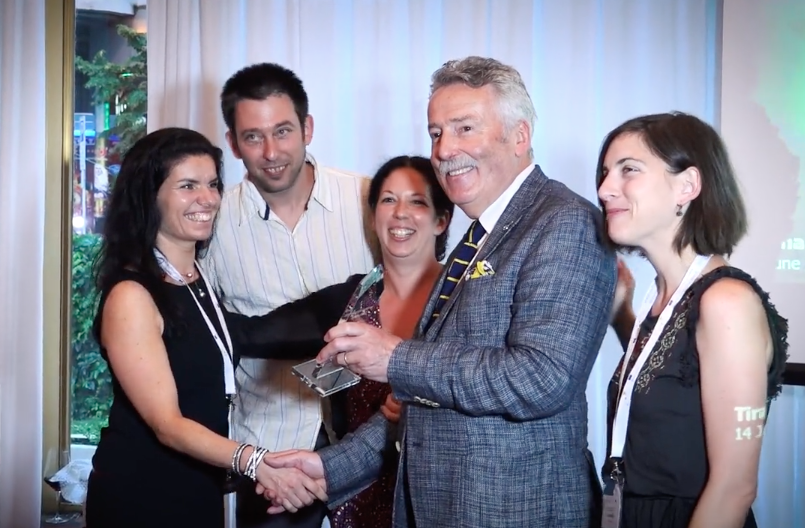 Dr. Borbála Fellegi, Foresee Founder and Executive Director; Dr. Gábor Héra, Foresee sociologist researcher; Dr. Edit Törzs, EFRJ Executive Director; Dr. Tim Chapman, EFRJ Chair; Dóra Szegô, Foresee sociologist researcher (left to right)to the development of restorative justice in Europe. Borbála Fellegi, Ph.D., IIRP Assistant Professor, is the group's Founder and Executive Director.
Dr. Borbála Fellegi, Foresee Founder and Executive Director; Dr. Gábor Héra, Foresee sociologist researcher; Dr. Edit Törzs, EFRJ Executive Director; Dr. Tim Chapman, EFRJ Chair; Dóra Szegô, Foresee sociologist researcher (left to right)to the development of restorative justice in Europe. Borbála Fellegi, Ph.D., IIRP Assistant Professor, is the group's Founder and Executive Director.
Edit Törzs, Ph.D., EFRJ Executive Director, praised the group, presenting the award at EFRJ's biannual conference, in Tirana, Albania, in June. She lauded Fellegi as "the driving force behind Foresee and chair of the EFRJ Research Committee for many years."
The Foresee team are researchers and scientists who are also practitioners, trainers and activists. Their work across Hungary and Europe shows "an amazing high level of competence and quality," added Törzs.
- Details
- Written by John W. Bailie, Ph.D.
 Managing is about overseeing processes, plans and systems. It’s about keeping things, often created by others, running.
Managing is about overseeing processes, plans and systems. It’s about keeping things, often created by others, running.
Leading is about engaging and becoming immersed in the nuanced and complicated lives of real people. Leading is envisioning, building and sometimes breaking things on purpose. Leadership helps a team manifest ideas and aspirations.
Management and leadership skills are both essential for a healthy organization, but they are not the same thing. In some organizations, the assignment of these tasks is rigid and highly concentrated into specific job roles.
A nuclear power plant has a very high percentage of people whose job it is to manage a finely tuned system of fixed processes and procedures. In other settings these roles are, shall we say, more fluid…
There are a limited number of people in any organization who are explicitly assigned managerial tasks. But the great thing about leadership is – anyone can lead.
Some roles have strong leadership expectations baked into them. However, the most effective organizations expect some amount of leadership from every role – from the part-time intern to the CEO.
- Details
- Written by Kristin Oakley
Schools across the country are moving away from an era of zero-tolerance policies and shifting toward methods that involve restorative justice, encouraging students to resolve their differences by talking to each other rather than resorting to violence. In New York City, five schools that have implemented this system are already seeing results. NewsHour Weekend's Megan Thompson reports.

Restorative Works Year in Review 2024 (PDF)
All our donors are acknowledged annually in Restorative Works.

